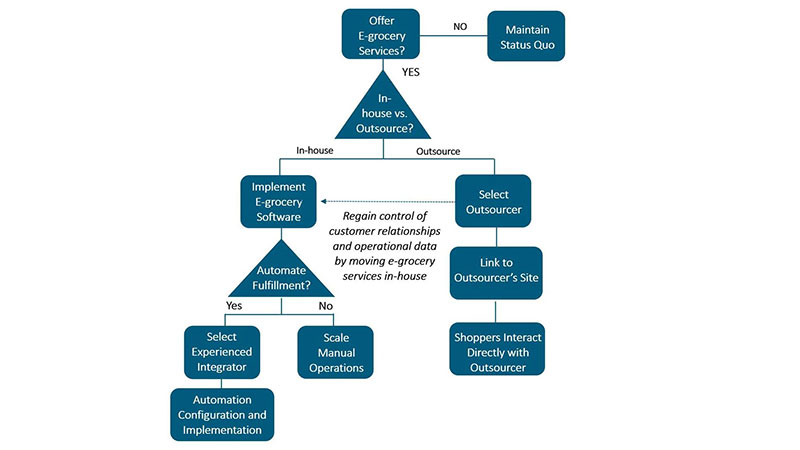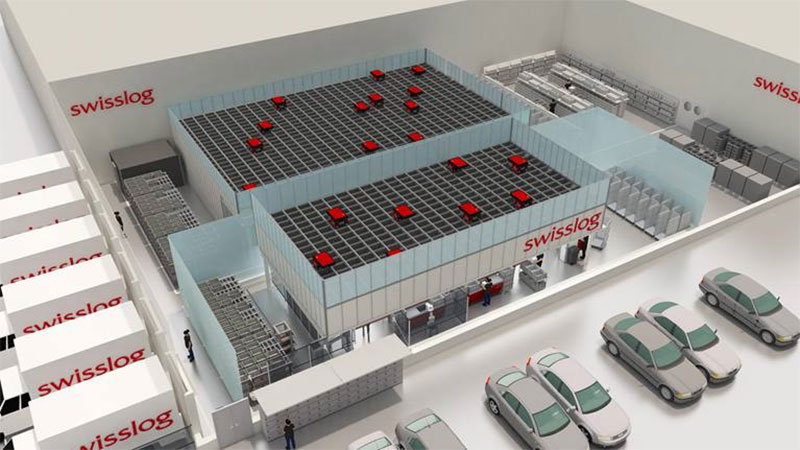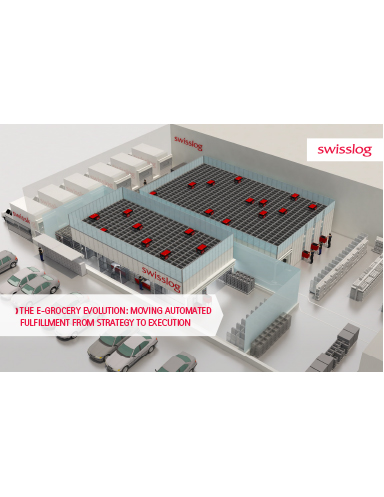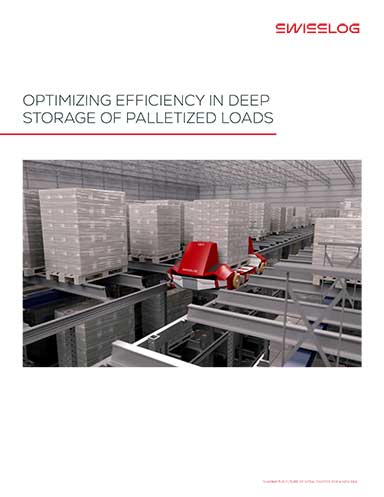Finding Your Path on the Journey to Automated E-Grocery Fulfillment

Insights to help you identify and overcome e-commerce and order fulfillment challenges you'll face as you move forward on your e-grocery journey.
Every grocer will have their own e-grocery journey and automating fulfillment is becoming part of more of those journeys. As with any journey, getting where you’re going efficiently requires knowing exactly where you’re starting from.
This was the first challenge identified in our earlier post, Five Overlooked Challenges that Can Make or Break E-grocery Automation. In this post, we’ll dive deeper into how your starting point defines your path forward.
Starting at the Beginning
With e-grocery order volumes expected to account for more than 11% of total U.S. grocery sales in 2022, grocers just beginning to offer e-grocery services would be wise to anticipate rapid acceptance of those services.
If you’re at that point, you face one of the most important decisions you’ll make on your e-grocery journey: whether to manage e-grocery in-house or outsource it to a third party. The prospect of tapping into an existing e-commerce sales and fulfillment infrastructure can be appealing but it carries a steep price.

E-commerce Fulfillment
When you turn e-grocery over to another organization you lose control of the customer relationships and brand experience you’ve worked hard to build. Your customers will order through the third-party site and interact with employees of the third party when they receive their orders. The more orders they place, the less they become your customers and the more they become customers of the third party.
The relationship is similar to one that was formed in the late 1990s when e-commerce was first emerging. A major bookstore chain decided it would be simpler to have an e-commerce specialist fulfill their online orders through a co-branded relationship rather than building their own e-commerce business. The relationship worked fine for the retailer until it came time to renew. That’s when the e-commerce company pulled out, taking the retailer’s customer data and relationships with them.
They didn’t need the books from the retailer—they could get those directly from publishers and distributors—and their business continued to grow. But the decision to outsource proved catastrophic for the retailer, which did not survive the e-commerce revolution. It isn’t hard to see this scenario playing out in the grocery sector in the coming years.
Order Fulfillment
For grocers seeking to maintain control of their customer relationships, the process can start in one of two ways. One option is to first connect with an integration partner with experience in micro fulfillment center (MFC) and e-grocery fulfillment center (EFC) deployments, such as Swisslog. We’ll work with you to select best-of-breed software to support online ordering and in-store picking.
Those systems can then begin supporting manual picking while the automation system is being configured and deployed. You could also source the software first and wait to connect with an automation provider until manual picking shows signs of becoming unsustainable.
In either case, the software that supports e-commerce ordering, order management and in-store picking continues to play a vital role in the process after automation is added. The difference is, instead of all products being picked from the store, a large percentage of each order is assigned to the fulfillment center where they can be picked much more efficiently and only longtail items (specialty items, prepared foods, very slow movers) are picked from the store.
The ability to pick some items from the store is essential in virtually every MFC or EFC deployment, so putting it in place early allows grocers to get comfortable with e-grocery processes and build demand for their offering while automation is being planned.
During the automation system deployment, the software that controls manual and automated picking in the MFC or EFC is integrated with the order management system so the store and fulfillment center work together seamlessly to fill orders in the most efficient way.

Starting in the Middle
For grocers who have partnered with third parties to manage their e-grocery business and are now beginning to recognize what they’ve given up, the path to automation is similar to those just launching e-grocery services. You can work with an automation partner, or on your own, to deploy e-commerce and order management software. With that software in place, you can then begin filling orders by picking from store shelves to rebuild customer relationships while simultaneously planning for automation.
If you’re in this position, it can be particularly important to work with an automation partner that has broad experience with private grocers. E-commerce order data helps ensure automation is properly configured to your customers and market. But if you’ve been working with a third party, you don’t own the data your provider could use to configure your system.
An experienced partner can work around this gap. While there are some differences in order profiles based on markets and customer demographics for each grocer, there are also a lot of commonalities. Swisslog can work with industry data to begin the configuration process and refine the design as the project progresses and data from manually fulfilled e-grocery orders becomes available.
Starting at the End
If you’ve already made the investment in an e-commerce front-end and order management system and are fulfilling orders manually, the move to automated fulfillment becomes the next logical step in your e-commerce journey.
Manual picking can be an effective strategy to get an e-grocery business off the ground, but the challenges in scaling that business using manual processes quickly become apparent. The more orders you fulfill, the more pickers you have working in the store, which alienates in-store shoppers who must navigate through congested aisles.
Plus, unlike with automation, labor demands and order volumes grow proportionally. The more orders you fill, the harder you must work to recruit and retain staff and the higher your labor costs.
Because you have been doing manual picking, you already have the software systems and processes in place to move to automation, and the order data required to tailor a solution to your environment and market. The next step is connecting with an automation partner with a track record of success in supporting e-grocery fulfillment.
Taking the Next Step
While grocers may have different circumstances depending on the e-grocery decisions they’ve already made, there is a clear path forward for every grocer to capitalize on the demand for e-grocery services, own their customer relationships and scale their e-grocery business efficiently.
Related White Paper
The E-Grocery Evolution: Moving Automated Fulfillment from Strategy to Execution
As consumers get more comfortable with online grocery shopping, they will place smaller, more frequent orders, putting further pressure on the productivity and efficiency of in-store picking. Download Now!
Article Topics
Swisslog News & Resources
Walmart chooses Swisslog AS/RS and software for third milk processing facility Walmart and Swisslog Expand Partnership with New Texas Facility Swisslog gives live demonstration of ItemPiQ latest evolution Cardinal Health at-Home Solutions automates from shelf to patient Inside Cardinal Health at-Home: Getting the right products out the door at the right time Retail distribution closes in on the customer Automated storage on the move into 2024 More SwisslogLatest in Warehouse|DC
European Parliament Passes New Law Requiring Supply Chain Accountability Talking Supply Chain: Understanding the FTC’s ban on noncompetes North Carolina Welcomes Amazon’s Newest Mega-Warehouse SAP Unveils New AI-Driven Supply Chain Innovations U.S. Manufacturing is Growing but Employment Not Keeping Pace Maximize Warehouse Space with Mezzanine Automation: Expert Tips Most Companies Unprepared For Supply Chain Emergency More Warehouse|DC














